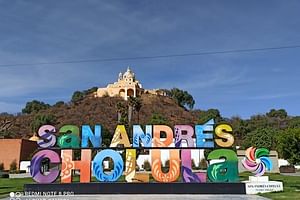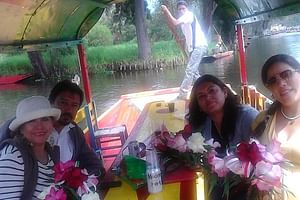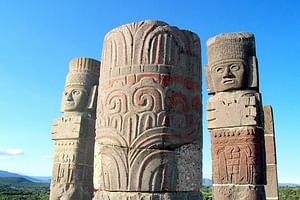After picking you up at your hotel, we will go to Xochimilco where we will board a Trajinera in the Xochimilco Canals through small floating islands made more than 500 years ago.
Later we will move to the old neighborhood of San Ángel and near there you will see the attached houses of Diego Rivera and Frida Kahlo (Museo Casa Estudio).
Then we go to Coyoacán where we will visit the church of San Juan Bautista. We will walk through its main streets, we will get to know the Frida Kahlo neighborhood, after spending some time in these beautiful places we will go to the Historical Center where the guide will explain some important places such as the Plaza de la Constitución, the Metropolitan Cathedral and several historical buildings of this ceremonial center of ancient Tenochtitlán, which continues to be the heart of the most important city in the country.
Duration
The tour starts at
-
Historical Center (Zócalo)
The Plaza de la Constitución, informally known as El Zócalo, is the main square of Mexico City. It was named in honor of the Cadiz Constitution promulgated in 1812. This is the second largest pla...
The Plaza de la Constitución, informally known as El Zócalo, is the main square of Mexico City. It was named in honor of the Cadiz Constitution promulgated in 1812. This is the second largest plaza in the world and the first among Spanish-speaking countries.
The Zócalo is located in the heart of the area known as the Historic Center of Mexico City, in the Cuauhtémoc demarcation. Its location was chosen by the Spanish conquerors to be established just to one side of what was previously the political and religious center of Mexico-Tenochtitlan, the capital of the Mexica.
-
Fine arts
The Palacio de Bellas Artes is a cultural venue located in the Historic Center of Mexico City, considered the most important in the manifestation of the arts in Mexico and one of the most renowned ...
The Palacio de Bellas Artes is a cultural venue located in the Historic Center of Mexico City, considered the most important in the manifestation of the arts in Mexico and one of the most renowned opera houses in the world.
This has been the scene and witness of shocking artistic, social and political events; Its construction began at the end of the mandate of Porfirio Díaz on the occasion of the celebration of the centenary of the beginning of the Independence of Mexico, however it was concluded and inaugurated until November 29, 1934 due to the Mexican Revolution.
-
Coyoacan
Villa Coyoacán is a town founded around the 7th century AD. C. by indigenous Nahuas Colhuas. It is currently the seat of the government of the Coyoacán mayor's office and one of the most important t...
Villa Coyoacán is a town founded around the 7th century AD. C. by indigenous Nahuas Colhuas. It is currently the seat of the government of the Coyoacán mayor's office and one of the most important tourist centers in Mexico City.
-
Central Library of the UNAM
The construction of the Central Library began in 1950. It was built on a total area of 16 thousand square meters. On April 5, 1956 it opened its doors to the university community.
The construction of the Central Library began in 1950. It was built on a total area of 16 thousand square meters. On April 5, 1956 it opened its doors to the university community.
-
Xochimilco
The famous Xochimilco canals, the last vestiges of the extensive transportation system created by the Aztecs, are located in the south of Mexico City. Colorful gondolas take visitors strolling alongsi...
The famous Xochimilco canals, the last vestiges of the extensive transportation system created by the Aztecs, are located in the south of Mexico City. Colorful gondolas take visitors strolling alongside the boats of food vendors, artisans, and mariachis.
-
House Study Museum (San Angel)
Commissioned by Diego Rivera, in 1931 Juan O'Gorman designed one of the first functionalist constr...
Commissioned by Diego Rivera, in 1931 Juan O'Gorman designed one of the first functionalist constructions in Latin America: a house for the painter and another for his wife Frida Kahlo, where each would have their own studio. smooth concrete that each house a house, one red with white (the painter) and the other blue (for the artist), independent of each other and connected only by a small bridge at the top
Private transportation
Bottled water
Guia Bilingüe
1 hour of Trajinera in the channels of Xochimilco
Tickets to the Casa Estudio Museum in San Angel
Travel insurance









